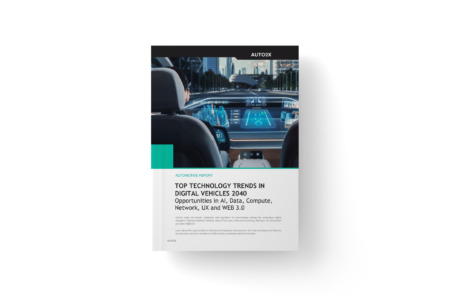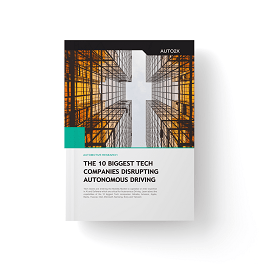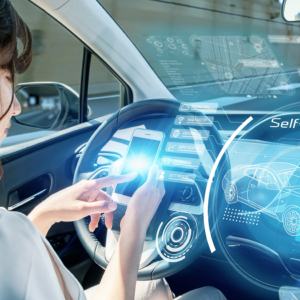Description
Auto2x maps the trends, roadmaps and regulation for tech driving the automotive digital disruption incl. Data-Driven cars, Autonomous Driving, Next-gen UX, Auto2x
Read Auto2x’s new report on the Top Technology Trends in Digital Vehicles 2040 to learn about:
- The opportunities in software and hardware development driven by new requirements in vehicle design, manufacturing, lifecycle management and circular autos;
- The most promising new features and services coming to vehicles by 2040 based on AI technologies, such as machine learning and computer vision, to advance Autonomous Driving, HMI, Electrification and Sustainable mobility;
- Key companies behind technological breakthroughts in computing, data and blockchain to unleash new value, such as Peta-Scale computing, Digital Vehicle Wallets, Digital Twin and more.
- The evolution of regulation, policy and standards to allow secure vehicle updates, continuous homologation
Digital disruption is creating new opportunities
5G connectivity, Vehicle-to-Everything (V2X) communications, AI, Software and Big data are driving the digital transformation of the automotive industry.
Vehicles are quickly becoming part of the Internet of Things (IoT) leveraging built-in, embedded or brought-in connectivity. This enables communication with their external environment and a new range of digital services.
Vehicles are becoming Software-on-Wheels creating new opportunities for incubents and new entrants
Software-on-Wheels
Connectivity advancements are pushing for more dedicated software development, while a large part of hardware-oriented systems becomes more standardized and commoditized.
The growing number of ECUs with sophisticated software leads to significant cost increases, higher in-vehicle software complexity and constraints in the optimization of vehicular functions.
Next-generation autonomous vehicles must integrate new, diverse technologies and complex logical operations; the hardware architecture has to support advanced software functionality and upgradability.
The majority of carmakers and major automotive suppliers is working on Software-Defined Vehicles, such as APTIV with their Smart Vehicle Architecture.
The future of vehicles is Digital and Circular, Auto2x
Cyber-Security becomes a top priority driven by mandates
Connected Cars, which are essentially collectors and distributors of information, need robust design architecture that guarantees network security in addition to multiple layers of operational and peripheral security to protect against cyber-attacks.
Over the next decade, vehicle security will expand to cover cyber threats on the vehicle as well as the vehicle’s external network including the infrastructure. Therefore, effective Automotive Cyber Security requires cross-industry collaboration. Read more in our report Automotive Cyber Security.
Cockpit Tech & Digital Car services
The digitalization of the vehicle interface is progressing. A new ecosystem for drivers and passengers is emerging.
Continuous OTA
The different lifecycles of automotive systems and consumer electronics increase the complexity of design architecture. The introduction of OTA software updates by an increasing number of OEMs is a step in this direction.





